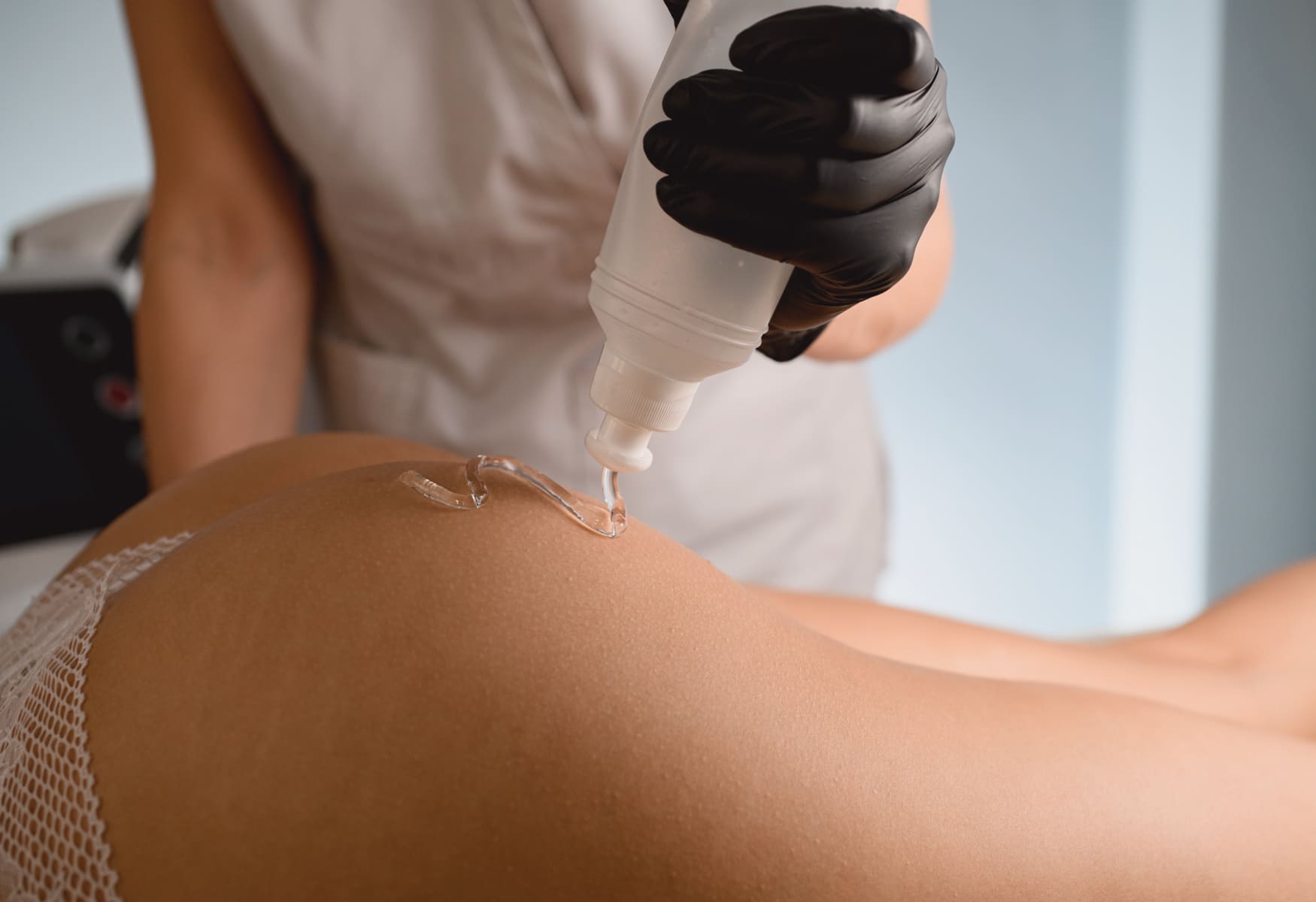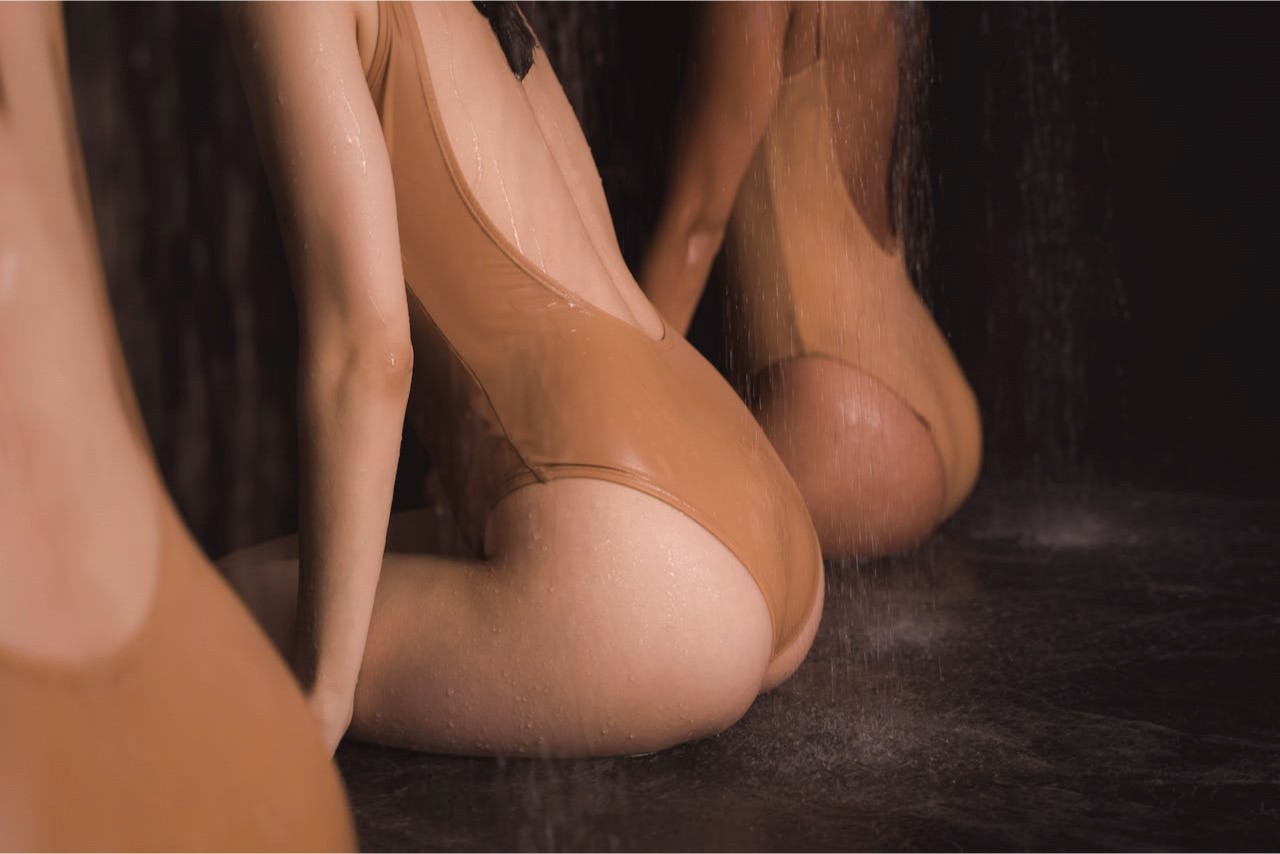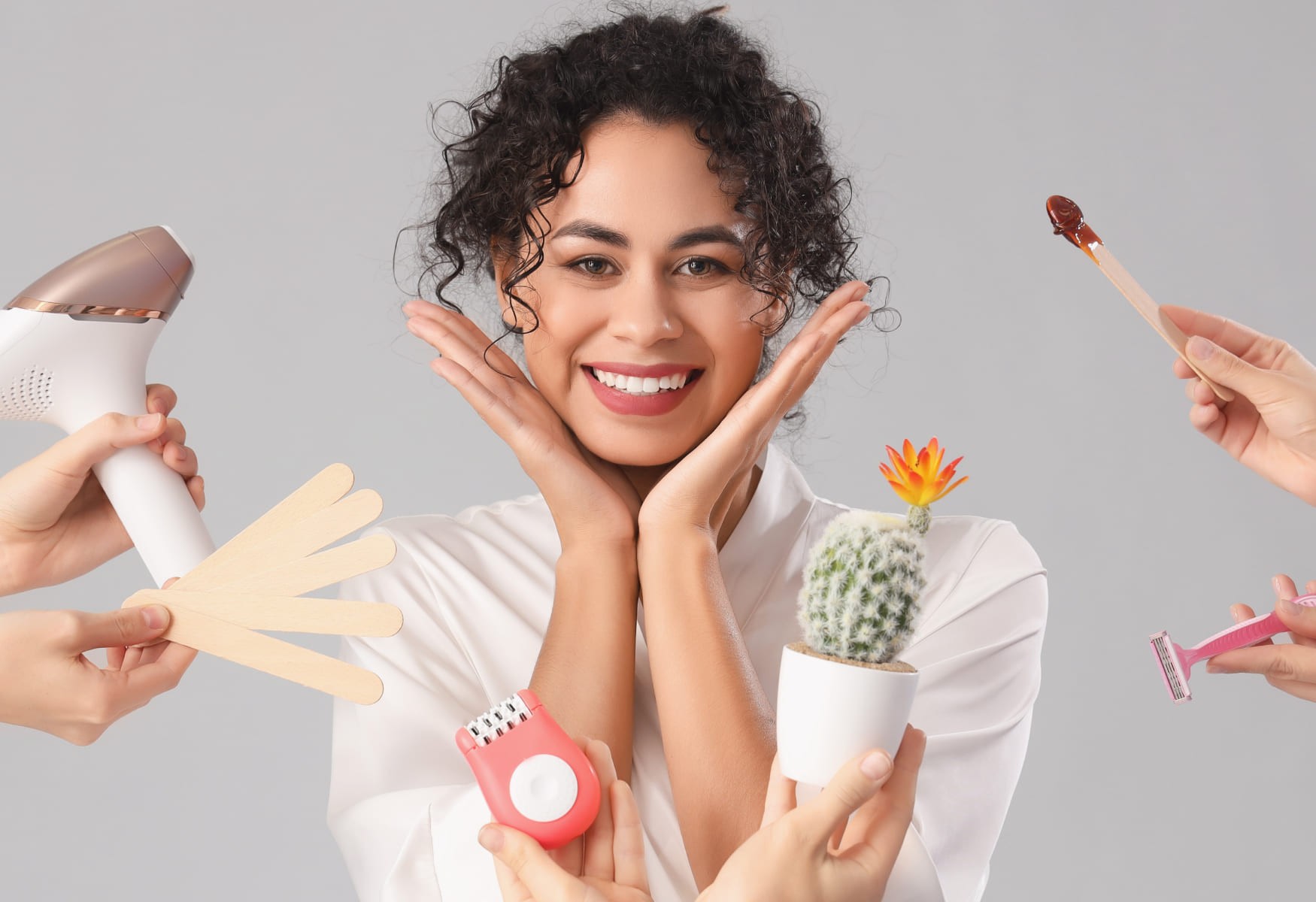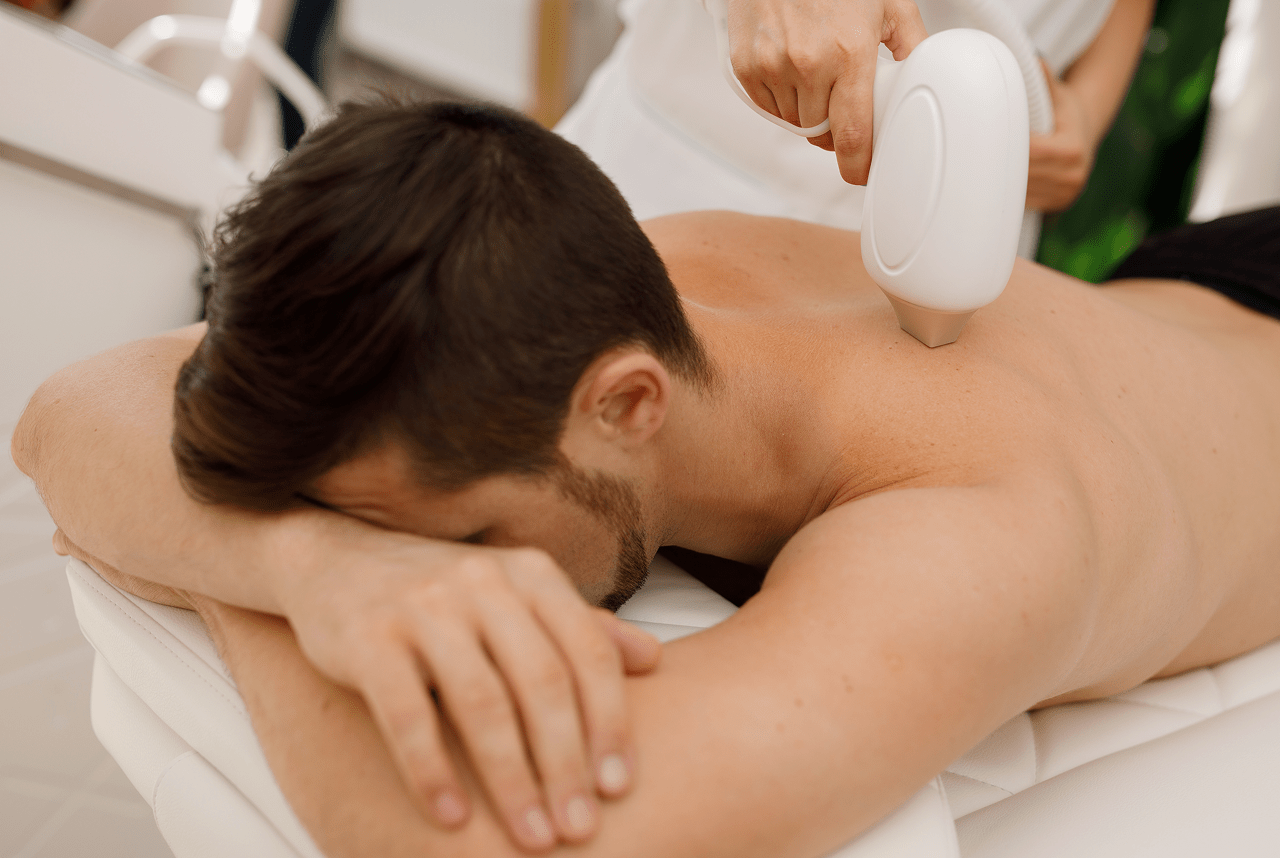Hair on the buttocks is a completely natural part of body hair for both men and women. Since it’s typically not visible, most people leave it as it is. However, there are several reasons why someone might choose to remove hair from this area. This article will explore those reasons and the various methods for dealing with butt hair.
Obsah
If you’d like to put the problem of unwanted hair behind you, schedule a laser hair removal session with us. It’s the only procedure that offers a truly permanent solution. Fill out our quick quiz, and you can enjoy a discount on your first treatment!
Why does the hair on our asses grow at all?
Physiological reasons for hair growth in the buttock area
Body hair, including the buttock area, serves several purposes. They help regulate body temperature and serve as insulation against heat loss.
They can also reduce friction between the skin and external surfaces or clothing, which is particularly important in the buttock area where there is constant friction when moving and sitting. In addition, hairs help to wick sweat away from the skin, so they have a hygienic purpose.
A hairy butt for both men and women can be attributed to genetics
The amount and distribution of body hair is largely determined by genetics.
Different people, and sometimes entire ethnic groups, differ in the amount of body hair and the way it grows, how coarse, fine or long it is. You can hardly control the genetic aspect of hair growth. But that doesn’t mean there’s nothing you can do about the hair you don’t want.
Excessive hair growth on the buttocks can signal a health problem
Excessive hair growth, known as hypertrichosis (or in severe cases, hirsutism), can have several causes.
The main ones include hormonal imbalances, particularly increased production of androgens. This is often associated with certain health conditions, such as polycystic ovary syndrome (PCOS) in women. Other potential causes of hormonal imbalance include the use of certain medications or steroids, which can affect hair growth.
Hormones may also be out of balance due to endocrine disorders.
If excessive hair growth on your buttocks is causing you trouble or is associated with other symptoms, it’s advisable to seek medical help rather than relying on self-treatment for hair removal.

Temporary methods of hair removal around the anus and on the buttocks
Shaving
Shaving is a quick and accessible way to remove hair from the buttocks and around the anus.
If you’re wondering how to shave your buttocks, we recommend using a new, sharp razor for the smoothest shave possible. There are also specialized razors designed specifically for shaving the buttocks.
If you use the same razor for different areas of the body, at least use a different blade or head for the buttocks area—it's best not to explain why…
Before shaving, thoroughly wash the buttocks area and apply a shaving gel or foam designed for sensitive skin to reduce the risk of irritation.
Be very careful while shaving to avoid cuts or skin irritation. After shaving, you can apply a soothing cream or gel, but avoid products containing alcohol, which could further irritate the skin.
Wax depilation
This method can be more effective than shaving because it removes hair from the roots, resulting in longer-lasting results.
During waxing, warm wax is applied to the skin and, once it hardens, is pulled off against the direction of hair growth.
However, waxing should be done professionally.
Especially in such a sensitive area, we do not recommend attempting it at home. Professional salons have more experience and knowledge in Brazilian waxing and other methods of waxing safely with minimal irritation.
When comparing epilation versus waxing, the former still clearly leads in terms of effectiveness.
Depilatory creams
Although depilatory creams can be used for hair removal on less sensitive parts of the body, their use around the anus is not recommended.
The skin in this area is particularly delicate and may be more susceptible to chemical burns, irritation, and allergic reactions.
If you decide to use a depilatory cream anyway, first perform a sensitivity test on a small, less sensitive area of your body.
All this can disappear after laser epilation. Experience the unique healing power of this procedure literally firsthand.
What to do to make hair on the buttocks grow less or more slowly?
Hair growth slowing cream
There are specialized creams and serums on the market designed to slow down hair growth. These products contain natural extracts or chemical inhibitors that affect hair follicles and reduce their growth rate.
With regular application of these products, your hair may become sparser and its growth may slow down.
Hormonal therapy in cases of hormonal imbalance
As we’ve discussed, excessive hair growth can sometimes be caused by health issues and hormonal imbalances.
Fortunately, this problem can be addressed with modern medicine. After a consultation, your doctor may recommend hormonal therapy or specific medications that target androgens. These treatments can reduce the effects of male hormones and help limit hair growth.
Nutrition and lifestyle
A balanced diet combined with sufficient sleep and regular physical activity can positively impact the appearance and health of your skin. It supports hormonal balance, which may potentially slow down hair growth.
Of course, if your hair growth is genetically determined, a healthy lifestyle alone won’t prevent it. However, it doesn’t mean you should skip this part of the overall puzzle.
Regular exfoliation
Exfoliation helps remove dead skin cells and allows hair to grow freely, reducing the risk of ingrown hairs and inflammation.
Gentle exfoliation of the buttocks can also stimulate cell renewal and improve the overall appearance of the skin.

Hairy buttocks in both women and men are best addressed with laser hair removal
Effectiveness and durability of results
Laser hair removal targets the pigment in hair follicles, allowing for the effective destruction of hair at its root and preventing further growth.
This is the main advantage over shaving, waxing, and other traditional methods that only offer temporary hair removal.
Laser hair removal provides long-term and, in some cases, permanent hair elimination, provided that all aspects of the procedure and aftercare are properly followed.
Safety and professionalism
In professional salons, qualified specialists with training and experience in laser hair removal perform the treatments.
Expertly conducted procedures have minimal risk of side effects, such as skin irritation, burns, or hyperpigmentation.
The quality of the laser is also crucial in these salons—typically, they use medical-grade lasers, which are more effective and safer than devices available for home use.
Comfort and less painful treatment
Laser hair removal of the buttocks, when done properly and with all precautions observed, is one of the least painful hair removal methods. Your skin, especially in such a sensitive area as the buttocks, will appreciate this.
Modern lasers are also equipped with cooling systems that provide greater comfort during the procedure and reduce the sensation of discomfort.
Perfect precision of the procedure
The laser device allows targeting hair with a high degree of precision, without damaging the surrounding skin. This is especially important in areas where the skin is more sensitive or where specific hairs need to be targeted.
Hygiene and reducing the risk of infection
Laser hair removal is performed with strict adherence to hygiene standards. Compared to other methods, there is a very low risk of infection or bacterial transmission.
This stands in stark contrast to at-home hair removal, where proper sterilization of tools and cleanliness of the surrounding environment are often common issues.
Personalized approach
In a professional salon, you can expect an individual consultation during which the technician will assess your skin and hair type, your health condition, and specific needs.
Based on these findings, the laser can be customized specifically for you.






